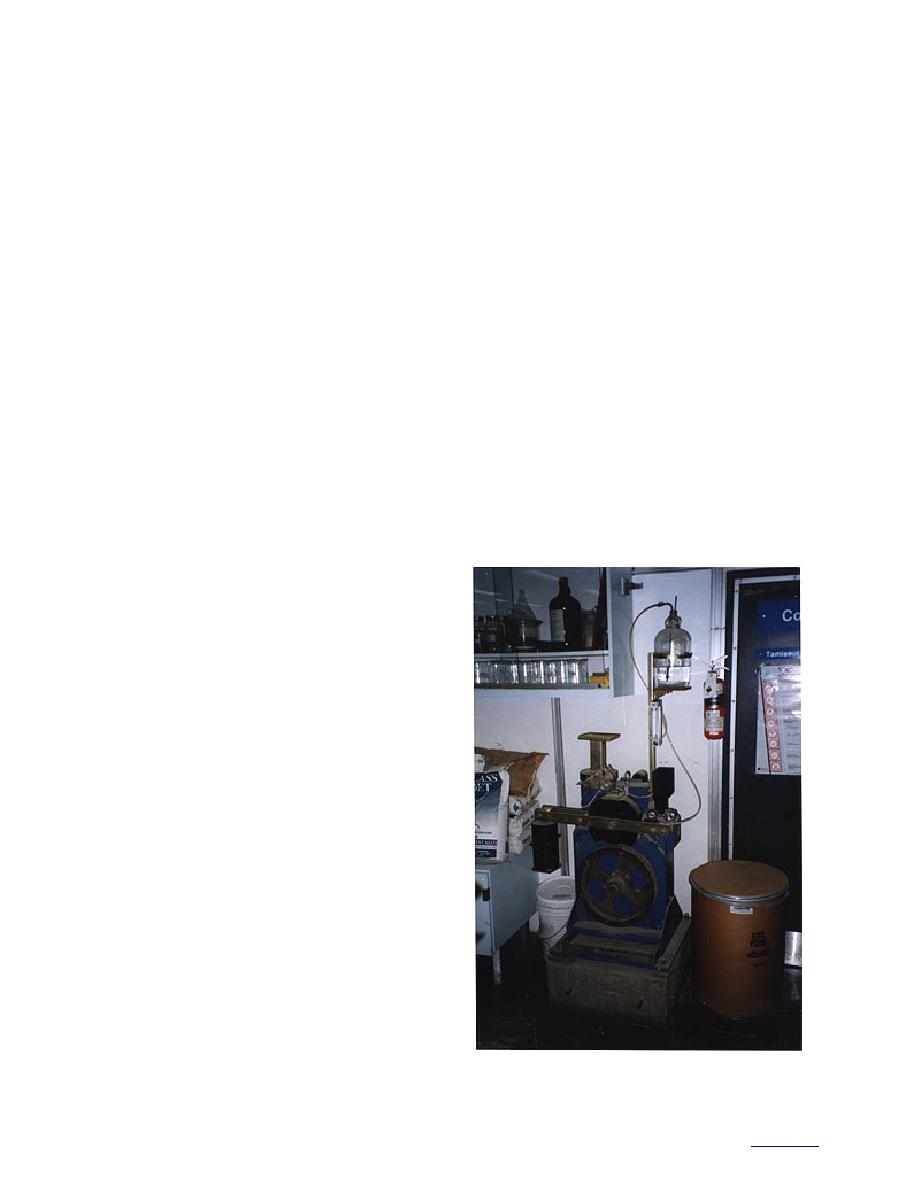
are placed in the drum together with the aggre-
speed number (VSN). The VSN relates well to the
gates. The drum is then rotated, and the steel ball
skid numbers collected from the field (Fig. 22).
creates an impact load on the aggregates. After
This device is not as commonly available as the
500 revolutions, the material finer than the no. 12
BSRT.
sieve is weighed and any loss is noted. The L.A.
abrasion number is the percent passing the no. 12
Polishwear testing devices
With respect to testing, five characteristics need
sieve. No standard value is mandated, and most
to be evaluated for selection of skid-resistant
states tend to limit it to 40. The L.A. abrasion
aggregates: texture, shape, mineral constituents,
number does not correlate well with field perfor-
chemical composition, and gradation (Beaton
mance. High values for slag and limestone aggre-
1976). The shape (angularity) of the aggregates
gates have been generated from this test, and
can be determined with the tests discussed in the
pavements constructed with these aggregates
previous section. Mineral constituents can be
have shown good performance in the field.
determined from petrographic analysis. Trem-
blay et al. (1995) concluded that aggregate type
British Accelerated Wear and Polishing Device
(mineral constituents) plays a significant role in
The British Accelerated Wear and Polishing
maintaining skid resistance and that the skid
Device (BAWPD) was designed to accelerate
resistance from limestone/dolomite aggregates
wear and polish of a pavement surface under a
tends to wear quickly and thus decrease rapidly.
pneumatic tire approximately 20 cm in diameter
Volcanic aggregates also showed low but stable
at an inflation pressure of 310 kPa. The speed of
resistance to skidding, but their resistance to
the tire is approximately 420 m/hr (Fig. 23).
wear was high, and pavement surfaces with these
Fourteen aggregate test specimens are
type of aggregates tended to maintain their macro-
mounted on a 41-cm-diameter and 6-cm-wide
texture over time. Sandstone made from quartz,
wheel. One drawback with this method is that the
feldspar, and clay minerals showed the highest
resistance to polishing. Marek (1972) came to sim-
ilar conclusions and reported `polish resistant'
aggregates included siliceous gravels, granites,
diabase, quartzite, sandstones, and expanded
shales. This corresponds to the hardness of the
minerals that comprise these rocks.
The mineral constituents give information on
the wear-polish characteristics of the aggregates
and in turn on the texture of the pavement sur-
face. However, if used alone, the information has
to be indexed to field performance. The acid
insoluble test (ASTM D 3042 1995) can also be
used to characterize the wear-polish characteris-
tics of limestone aggregates, which can exhibit
skid resistance ranging from extremely slippery
to very good (Marek 1972) due to their mineralogi-
cal and textural properties. The interpretation
and use of the test results are controversial (Bea-
ton 1976), however, and the acid insoluble test is
recommended for laboratory evaluation and not as
a primary indicator of wear-polish.
Currently, NHDOT uses the Los Angeles abra-
sion test to evaluate the wear characteristics of
HMA aggregates. This test is described in AASHTO
T-96-94 (1998), Standard Test Method for Resistance
to Degradation of Small Size Coarse Aggregate by
Abrasion and Impact in the Los Angeles Machine. It
involves placement of a known weight of material
in a drum. Several steel spheres of known weights
Figure 23. British wear and polishing device.
15
to contents



 Previous Page
Previous Page
